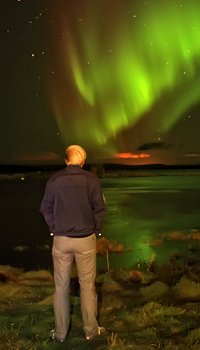

NASA's goal of putting astronauts back on the moon by 2020 is all but impossible to achieve, a presidential panel was told Wednesday.
An independent analysis concluded there is little hope NASA could replicate any time soon what Apollo 11 accomplished 40 years ago. And sources said an undisclosed part of the study showed it may take until 2028 -- nearly 60 years after America's first moon landing -- to get back.
"We can't see [the gap] closing," Gary Pulliam, an analyst with Aerospace Corp., told a near-silent audience in Huntsville, Ala., where engineers at the Marshall Space Flight Center have spent the past four years designing new rockets for NASA's Constellation program.
One NASA analyst, who spoke on the condition of anonymity because he is not authorized to speak on behalf of NASA or the review panel, said astronauts might be able to return to the moon by 2028, although another source said 2035 was more likely.
The grim assessment, delivered on the second day of hearings this week on NASA's human spaceflight program, is the latest blow to the Constellation program, a 4-year-old effort to design new rockets and a crew capsule to take astronauts to the moon and eventually Mars.
On Tuesday, former astronaut Sally Ride told the full panel, led by former Lockheed Martin CEO Norm Augustine, that she did not expect that Constellation's Ares I rocket and Orion capsule could complete a first mission into low-Earth orbit before 2017 -- two years after its current target date.
A second estimate, calculated by Pulliam on Wednesday, was even more pessimistic. Because of ongoing technical troubles and insufficient funding, he said, Constellation's first mission could be delayed to 2019. "It should not surprise anyone that problems exist," he said.
The findings of the panel build on months of increasingly critical reports on Constellation, which ex-NASA Administrator Michael Griffin chose in 2005 to fulfill then- President George W. Bush's vision of returning astronauts to the moon by 2020 to prepare for an eventual Mars mission.
There are already signs that the panel is preparing options that would dramatically change NASA's current plans to build two big rockets: the Ares I to take crew to the space station and low-Earth orbit, and the Ares V heavy-cargo lifter that would take up a moon lander and propellant to take the Orion capsule and astronauts to the moon for extended visits.
One of the panel's subgroups, led by retired Air Force Gen. Lester Lyles, recommended that the group consider allowing America's international partners to participate in the development of NASA's human spaceflight plans.
Another far-reaching recommendation came from a subgroup headed by former space-shuttle engineer and Boeing executive Bohdan Bejmuk. It called for NASA to give up flying to low-Earth orbit, including to the international space station.
"Let's turn it over to the newcomers," he said, referring to companies such as SpaceX of California and Orbital Sciences Corp. of Virginia, which have NASA contracts to develop rockets and unmanned capsules that can reach the space station.
Doubts about the direction of the manned-space program spurred President Barack Obama to name the committee, which has until late August to present financial and policy options as to how NASA should proceed.
To stay on the current course, the White House would have to pump billions of dollars more into Constellation -- or completely rethink how, and why, NASA sends astronauts into space. In the meantime, with the space shuttle slated to retire by 2010 or 2011, the U.S. will confront a years-long gap when it has no capacity to send humans into space and must pay the Russians for trips to the space station.
An option to narrow that gap, suggested by Ride on Tuesday, is to extend the shuttle program past 2011. When the panel meets in Cocoa Beach today, U.S. Sen. Bill Nelson is expected to advocate this idea, according to an advance transcript.
"I wish you would consider extending the shuttle to a point in time that would lessen the gap so that we can have Americans riding American vehicles to get to our station, and then on to the moon, and then on to Mars," said Nelson, D-Fla.
A shuttle extension would prevent devastating job losses at Kennedy Space Center, which prepares NASA spacecraft for launch. One upcoming report estimates 7,000 job losses at KSC after the shuttle's retirement.
Jeff Hanley, manager of the Constellation program, appeared resigned to the bleak reports that the rockets would be years late. He said that predicting when a new rocket would launch was akin to "hurricane forecasting."
During the daylong hearing, however, several of Hanley's midlevel managers defended the beleaguered program. They offered their draft solutions to ongoing technical problems, including the Ares I rocket's tendency to shake violently on liftoff and potentially drift into its launch tower.
"We believe [Constellation rockets] are the fastest, most proven [vehicles] to close the human spaceflight gap," said Steve Cook, manager of the Ares program.
Vigorous defense from ex-chief But the most vigorous defense came from Griffin, who left the agency when Obama took office and is now a professor at the University of Alabama at Huntsville.
In a letter to the panel, he said NASA and the Constellation program were "targets of broad but shallow criticism." And he said Constellation was the "most expeditiously attainable, broadly capable, lowest risk, and lowest life cycle cost design" under review. "Do not allow the parochial voices of the small-minded, the self-interested, and the uninformed to prevail. Choose the future," he concluded -- a parting shot aimed at commercial carriers and military rocket companies competing to bury the Constellation program.
Among the options being considered by the committee are designs that would put the Orion capsule atop military rockets and another system that would use the shuttle's engines, giant fuel tank and solid-rocket boosters.

































